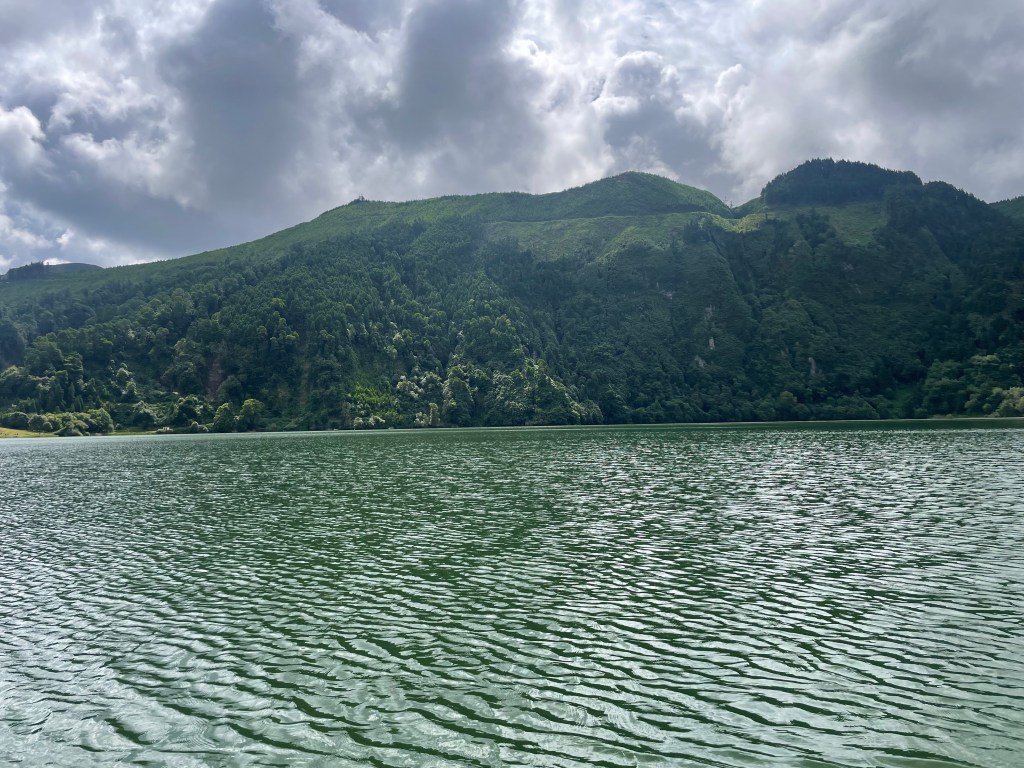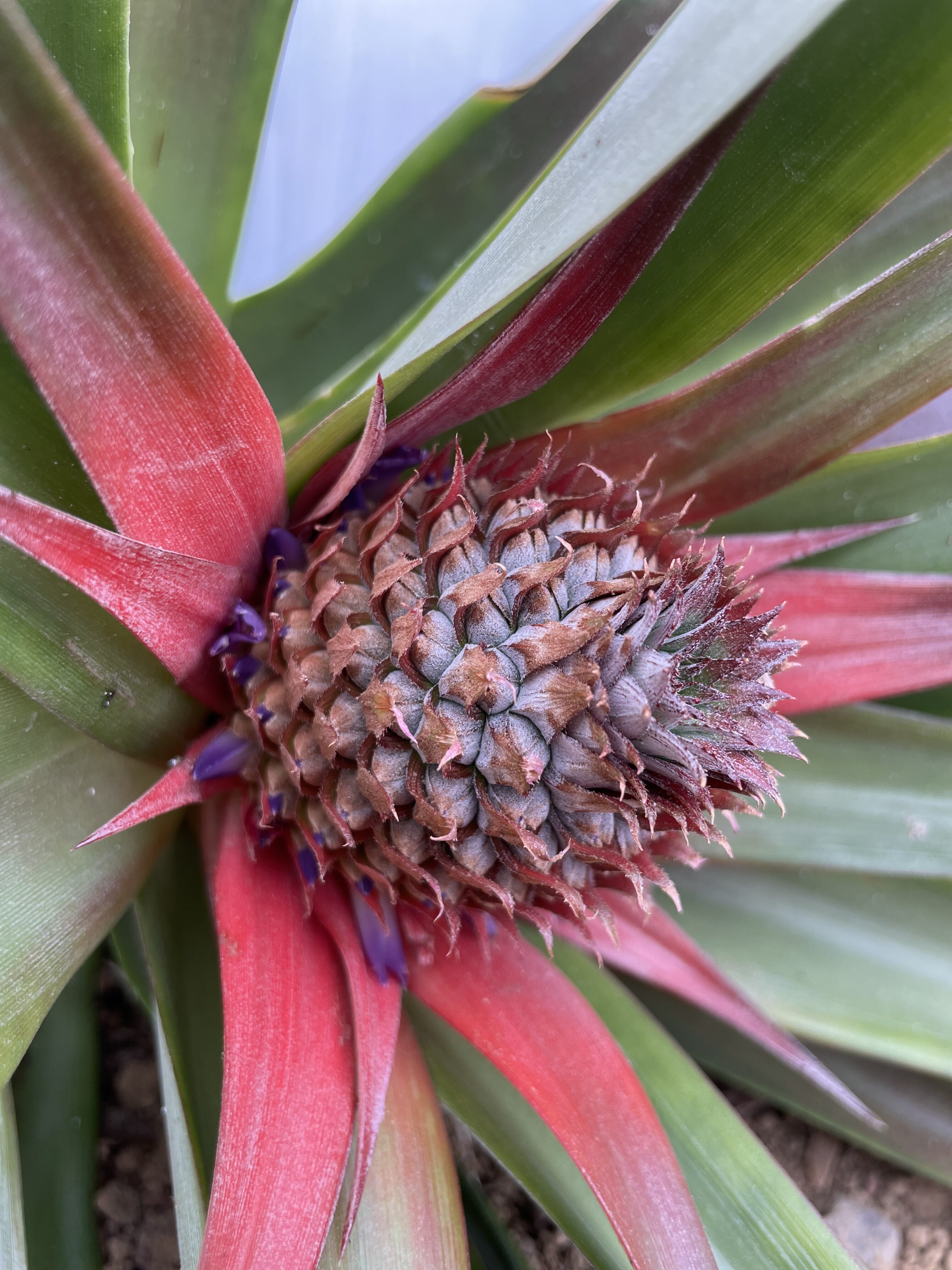Our final leg of this trip took us from one Portuguese archipelago to another: Ponta Delgada on the Azorean island São Miguel. It was an extraordinary cap to a trip that took us to big cities and countrysides across south-central Europe.
Why these archipelagos? Well, we had this wacky idea to go big on this trip and take advantage of the relative time and freedom to visit places that would otherwise be intractable or require a lot of time to explore. It’s why we initially considered places in South America (until we decided we didn’t want to trade summer for more winter). Once we decided on Europe, we sought out unusual or hard to reach destinations. Eventually, we discovered the direct flights between the Azores and Boston and worked backward from there.
There are absolutely more efficient ways to get here for when we come back next time and presumably don’t have as much luxury with our time. If you live in Boston, though, why aren’t you taking more trips to the Azores?
Pineapples.
Among the only things I knew about the Azores before we got there was that they grew a unique kind of pineapple. It’s not a climate where pineapples grow wild or naturally, but the volcanic soil, like many other pineapple growing places in the world, gives pineapples the nutrition they need. The result are greenhouse grown fruit that come out in a slightly more petite form with bolder, sweeter flavor.

Azorean pineapple growers start with a rhizome, divide the young pants, then use a method called fumes (fumigation with smoke) to provoke them to set fruit. Each pineapple takes about two years from planting to harvest. It’s the primary method, used since the 1850s, for ensuring a consistent crop.

The plantation we visited, Boa Fruita’s Ananás dos Açores, grows the São Miguel Smooth Cayenne pineapple. I assume there are other plantations that grow different varieties, because we did see the larger, more familiar fruit, but these little fellers were all over the island with their distinctive look and aroma. You can learn more about their methods from their website.
Lakes

For how small São Miguel island is (about the size of Hawaii’s Molokai island), there’s sure a lot to do and see. We were a bit exhausted by car rentals, so we decided to get where we could by bus, taxi, and any tours we planned.
We ended up on an early morning bus to a place called Sete Cidades (meaning 7 cities) where some of the island’s earliest volcanic activity occurred. After several rounds of eruption and collapse, four of the craters left behind in the calderas filled with water to form inland lakes. The most famous of them is the Lagoa das Sete Cidades, a large lake near the village split into two the Blue and Green lakes.

Like Michigan and Huron, these are technically one big lake, but they’re distinctive enough that people think of them as two (and I assume choose favorites). There are some great looking hikes around the caldera rim and around each lake, but we decided to take a canoe out on the water and give our legs a rest for the day.


Even though we almost ran out of energy this day, I’m really glad we came here. For all the time we spent swimming in water, or attempting to seek it for cooling off, it was a nice change of pace to be surrounded by it, paddling across the surface while surrounded by the caldera walls.
It’s a well known fact that we love lakes, so it’s a good thing we saved some for a return visit: Lagoa do Fogo and Lagoa das Furnas are both on the east side of the island, a side we just scratched the surface of this time around. At the very least, we need to try the Cozido das Furnas next time.
Cheese
You can take us out of Wisconsin, but you can’t take Wisconsin out of us. One thing I hadn’t expected to encounter on the islands was local cheese. It turns out, several of these islands make their own cheese and it’s really freakin good! São Jorge cheese seems to be the most popular, but we found cheese from São Miguel, Terceira, Pico, and Faial at the grocery store as well.

In Ponta Delgada, we stumbled on a cheese shop that sold only locally sourced products and I have to say Wisconsin cheese makers need more stores like this. Inside, large shelves lined the walls with wheel after wheel of cheese. At the counter, three employees (cheese tenders?) rotated out the stock of cheese, cut wedges fresh off the wheel to order, and offered samples to customers who were looking for a certain flavor or style. They probably had five or six wheels on offer at a time, though the São Jorge went fast.
The next day, we stumbled on another one a few blocks away. As the smell of cheese literally carried down the block, I still couldn’t help from wonder why we don’t have cheese shops like this in Madison or Milwaukee. For all the award winning cheese we make here, it’s hard to find this kind of immersive tasting and buying experience. If someone knows where to buy cheese right off the wheel in Wisconsin, let us know in the comments.
Sea
As much as I wanted to SCUBA, a refresh course plus the costs of equipment and transportation to the dive site felt like more than I was up for. Fortunately, there’s always snorkeling, which has a lot of the perks of SCUBA with a lot less of the hassle.

We went with a company called Sea Colors, a research-driven shop on the Ponta Delgada marina. Though we didn’t look very hard, they were the only snorkeling outfit we knew about, and they didn’t over-sell us on their offering. For the price they charged, we got a hell of a deal. Our guides took us out to a beach off the beaten path. We had to hike down a bit, but once we were suited up and in the water, the whole world of the ocean opened up.
Among the aquatic life we saw were: scorpion fish, damsel fish, common and white seabreams, a moray eel, and a couple types of wrasse. Thankfully, we did not encounter any Portuguese Man-o-war but we did spot five octopuses, and even saw a couple of them scoot around on the bottom.

We highly recommend these folks if you’re on the island. It was a highlight of the trip for sure. They also have a whale and dolphin observation excursion that we heard is great, if you’re not interested in small critters. Next time, we’ll bring Go Pros so we can maybe take some photos of the fish.
